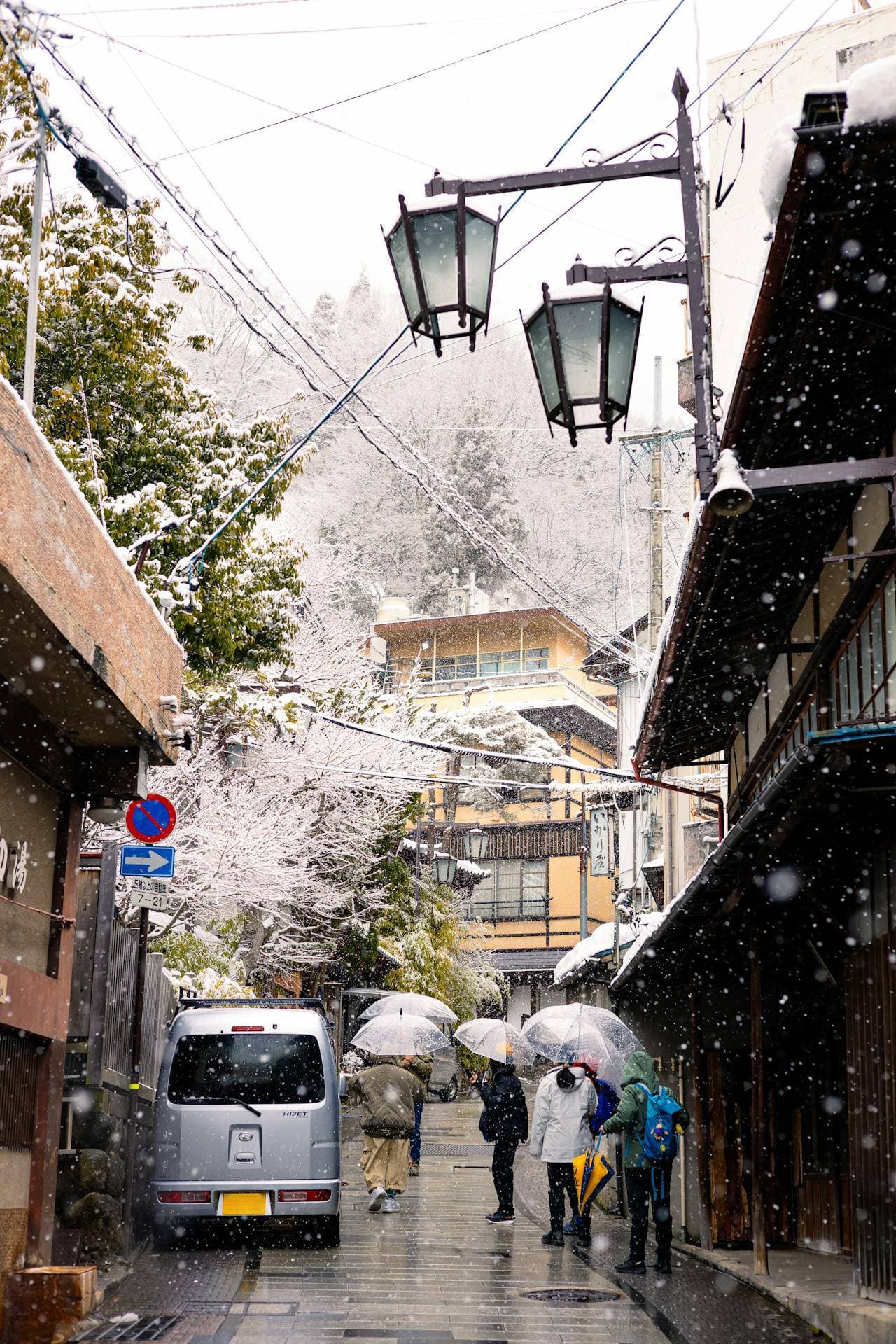
Nagano Snow Season
Host of the 1998 Winter Olympics, Nagano blends deep powder, alpine towns, and a lived-in mountain culture. Here’s how to time your trip, skip the lines, and enjoy winter beyond the lifts.
When Is Snow Season?
Lifts across Hakuba Valley, Nozawa Onsen, and Shiga Kogen are usually spinning by mid–December. Peak powder runs late December through February. March brings calmer weather, longer groomers, and value; upper-elevation lifts sometimes operate into April and even May in big snow years.
For storm-chasing, target mid-Jan → mid-Feb. For quieter slopes and bluebird laps, early March is a sweet spot.
Ski Culture in Nagano
In Nagano, snow isn’t just sport—it’s lifestyle. Kids learn on school trips, neighborhoods shovel before dawn, and mountain huts serve steaming bowls after last chair. Expect trail etiquette, tight-knit towns, and regional pride (hello, Togakushi soba).
Where to Ski & Ride
Choose based on terrain, vibe, and access. Nagano has everything from big-mountain bowls to family cruisers.
Hakuba Valley
Iconic Alps skyline, sidecountry access, and a mix of resorts (Happo, Goryu/47, Tsugaike, Iwatake). International energy with deep local roots.
Nozawa Onsen
Historic hot-spring village meets groomers and powder stashes. Steam-filled alleys, free public bathhouses, and great food.
Shiga Kogen
High-elevation, linked areas with long cold snaps and endless cruisers—family-friendly and less storm-windy than the coast.
Myoko & Togakushi (nearby)
Over the prefectural line but commonly paired: Myoko’s snowfall and steeps; Togakushi’s quiet local slopes and famous soba.
Winter Festivals & Events
Time your visit for lanterns, fire, and snow-lit streets:
- Nozawa Fire Festival (Jan 15): Fiery shrine ritual, huge bonfire, and village celebrations—book early.
- Nagano Tomyo Festival (Feb): Zenko-ji temple and city streets illuminated with artistic lanterns.
- Shiga Kogen Snow Events: Night skiing, fireworks, and seasonal celebrations across the linked areas.
Beyond the Slopes
Onsen Hopping
Stay in Nozawa Onsen for free public baths, or base near Yudanaka & Shibu Onsen for classic streets and steamy alleys.
Snow Monkeys
Walk into Jigokudani to see wild macaques soak in hot springs—best on calm, snowy mornings.
Shinshu Eats
Togakushi soba, oyaki (stuffed dumplings), mountain veggies, game, and local sake—perfect après.
Travel & Crowd Strategy
Getting There
Hokuriku Shinkansen → Nagano for Hakuba/Shiga (resort buses connect). For Nozawa, use Shinkansen → Iiyama then a short bus ride. Driving adds onsen/food flexibility—carry snow tires/chains.
Avoiding Crowds
Peak: Dec 29–Jan 3, Chinese New Year, and mid-Feb (university break). Ride Mon–Thu, start early, and choose smaller hills on weekends.
Weather & Gear
Bring storm layers, low-light lenses, and face protection. When winds hit the ridge lifts, dive into trees, lower zones, or take an onsen break.
Backcountry Safety
For sidecountry/backcountry (Hakuba ridgelines, etc.), carry beacon, shovel, probe, check advisories, and consider a certified guide.
Plan Your Nagano Winter
Mix powder days with onsen towns, night illuminations, and cozy food streets for the full Shinshu experience.